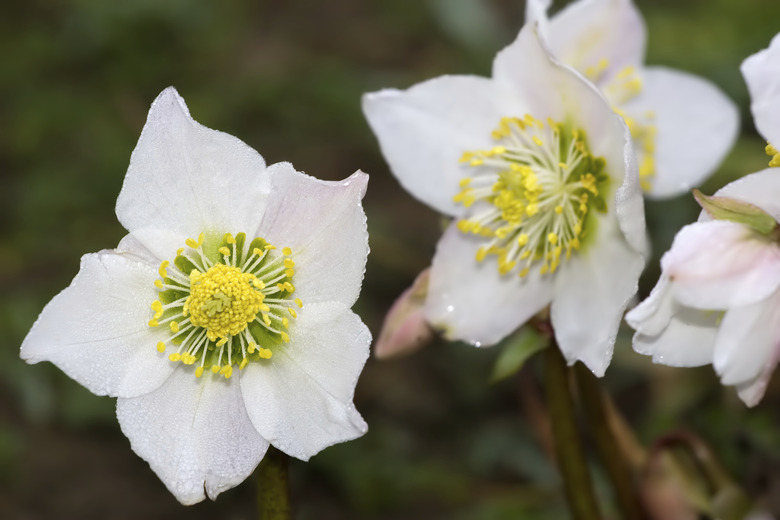How To Transplant Helleborus
Hellebore is the common spelling for Helleborus spp., a genus of flowering perennials that grow in U.S. Department of Agriculture plant hardiness zones 3 through 9, depending on species. Ideally, transplant hellebores during their dormant period in fall. The popular variety lenten rose (Helleborus orientalis), hardy in USDA zones 4 through 9, adapts most readily to transplanting. Regardless of species, it may take two to three years for plants to fully recover after a move and start blooming with their previous abundance.
Relocation and Bed Preparation
Ideally, transplant hellebores at one or two years old. You can still transplant more mature, established hellebores, but success rate and recovery time will vary.
Hellebores thrive in light shade and moist, organically rich soil. Before transplanting, prepare the bed at the new location by mixing compost with the soil. Use a 2- to 3-inch-thick layer spread evenly over the bed, then dig it 12 inches deep into the soil. Adding the compost before transplanting hellebores provides the high amount organic matter these perennials enjoy.
There's no need to cut back hellebores before transplanting.
Digging and Transplanting
Use a shovel to dig out and lift the root ball from the soil. To get enough of the roots, look at the drip line — the soil under the outer leaf tips — and dig the root ball the same diameter.
Dig a hole at the new planting site the same depth and slightly wider than the root mass.
Set the hellebore in the hole — adjust the soil level at the bottom until the point where the roots meet the stem sits level with the soil — then fill in around the root ball. Use the same soil you just dug out to fill the hole.
Water and Mulching
Water right after transplanting. This settles the soil, minimizes transplant shock and helps the roots adapt quickly to the new environment. Water when the top of the soil feels dry through any remaining dry fall weather. Mulch the bed to keep the soil moist after transplanting. The mulch layer also provides some cold protection over winter. Use 2 to 3 inches of compost spread evenly over the soil but leave 1 to 2 inches of space between the hellebore stalks and the compost. This helps minimize rot and insect problems.
Transplanting Seedlings
When mature hellebores go to seed after flowering, new seedlings grow the following spring near the parent plant. You can transplant these seedlings in the spring, either into pots or to fill out new areas of the garden. Transplant them when they are big enough to handle, and before new foliage on the parent plant blocks the sun. Dig out the seedlings with a small trowel, being careful not to disrupt the root ball. Replant them in moist soil and light shade.
To plant the seedlings in pots, select containers at least 8 inches in diameter with drainage holes, filled with potting soil.
References
- University of Vermont: Helleborus
- Utah State University Extension: Fall's A Good Time To Move Perennials
- Northwest Garden Nursery: Hellebore Care Instructions
- Oregon State University: Perennials: How To Dig And Divide
- U.C. Master Gardeners: Hellebores New Plant on the Block
- The Telegraph: Your Garden This Week: Hellbore Seedlings
